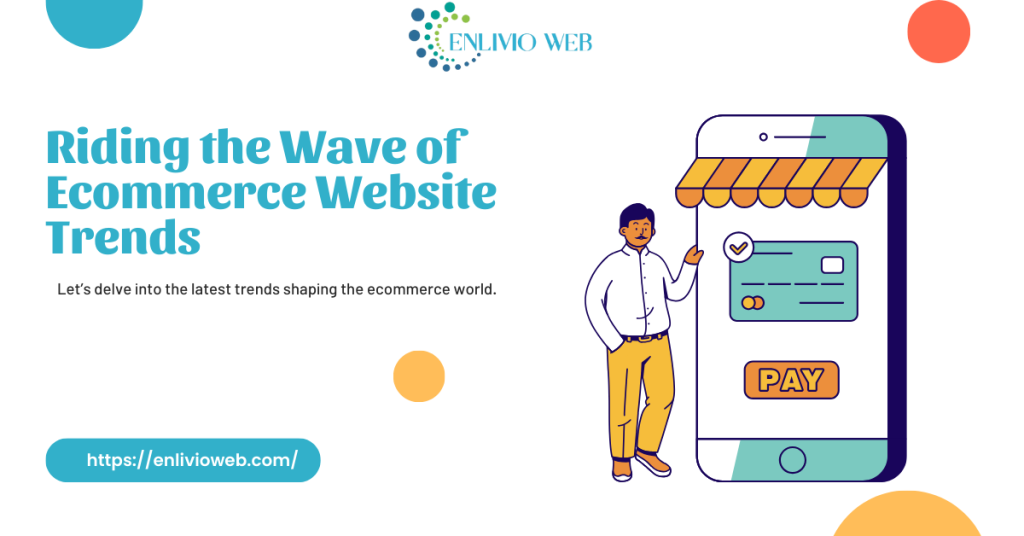In the fast-evolving landscape of online commerce, staying ahead of the curve is essential for success. As technology continues to shape the way we shop, ecommerce websites are undergoing exciting transformations to meet the demands of the modern consumer. Let’s delve into the latest trends shaping the ecommerce world.

1. Mobile-First Design
With the majority of online shoppers using mobile devices, a mobile-first design approach is no longer a luxury but a necessity. Ecommerce websites are focusing on responsive and intuitive designs to ensure a seamless user experience across various screen sizes. This trend isn’t just about fitting content onto a smaller screen; it’s about creating a user-centric design that prioritizes mobile users from the start.
2. Personalization for Enhanced User Experience
Consumers crave personalized experiences, and ecommerce websites are responding by implementing sophisticated personalization strategies. From tailored product recommendations based on browsing history to personalized marketing messages, websites are utilizing artificial intelligence and machine learning to understand and cater to individual preferences. This not only enhances the user experience but also boosts conversion rates.
3. Voice Commerce Integration
Voice commerce is gaining prominence as virtual assistants like Alexa and Siri become integral parts of our daily lives. That’s why ecommerce website development companies are incorporating voice search capabilities to allow users to make purchases using voice commands. This trend not only streamlines the shopping process but also opens up new opportunities for businesses to engage with customers through voice-activated promotions and services.
4. Augmented Reality (AR) for Virtual Try-Ons
One of the challenges of online shopping has been the inability to try products before purchasing. Ecommerce websites are tackling this hurdle by integrating augmented reality for virtual try-ons. Customers can visualize how products will look in real life, whether it’s trying on clothes or placing furniture in their living spaces. This not only reduces the rate of product returns but also enhances the overall shopping experience.
5. Sustainable Ecommerce Practices
As environmental consciousness grows, consumers are seeking brands that align with their values. Ecommerce websites are responding by adopting sustainable practices, from eco-friendly packaging to highlighting ethically sourced products. Integrating sustainability into the online shopping experience is not just a trend but a strategic move to attract and retain socially conscious consumers.
6. Seamless Checkout Processes
Cart abandonment remains a challenge for online retailers, prompting a focus on streamlining the checkout process. Ecommerce websites are implementing single-page checkouts, guest checkouts, and various payment options to minimize friction during the final stages of the purchase journey. Simplifying the checkout process can significantly improve conversion rates and customer satisfaction.
In conclusion, the dynamic nature of ecommerce demands a continuous adaptation to emerging trends. By embracing mobile-first designs, personalization, voice commerce, augmented reality, sustainability, and optimizing the checkout process, ecommerce websites can create an engaging and seamless shopping experience for their customers. Staying attuned to these trends not only enhances user satisfaction but positions ecommerce businesses for sustained growth in the ever-evolving digital marketplace. Contact us to develop a website adethering to these latest ecommerce trends by sharing your requirements with us now.

